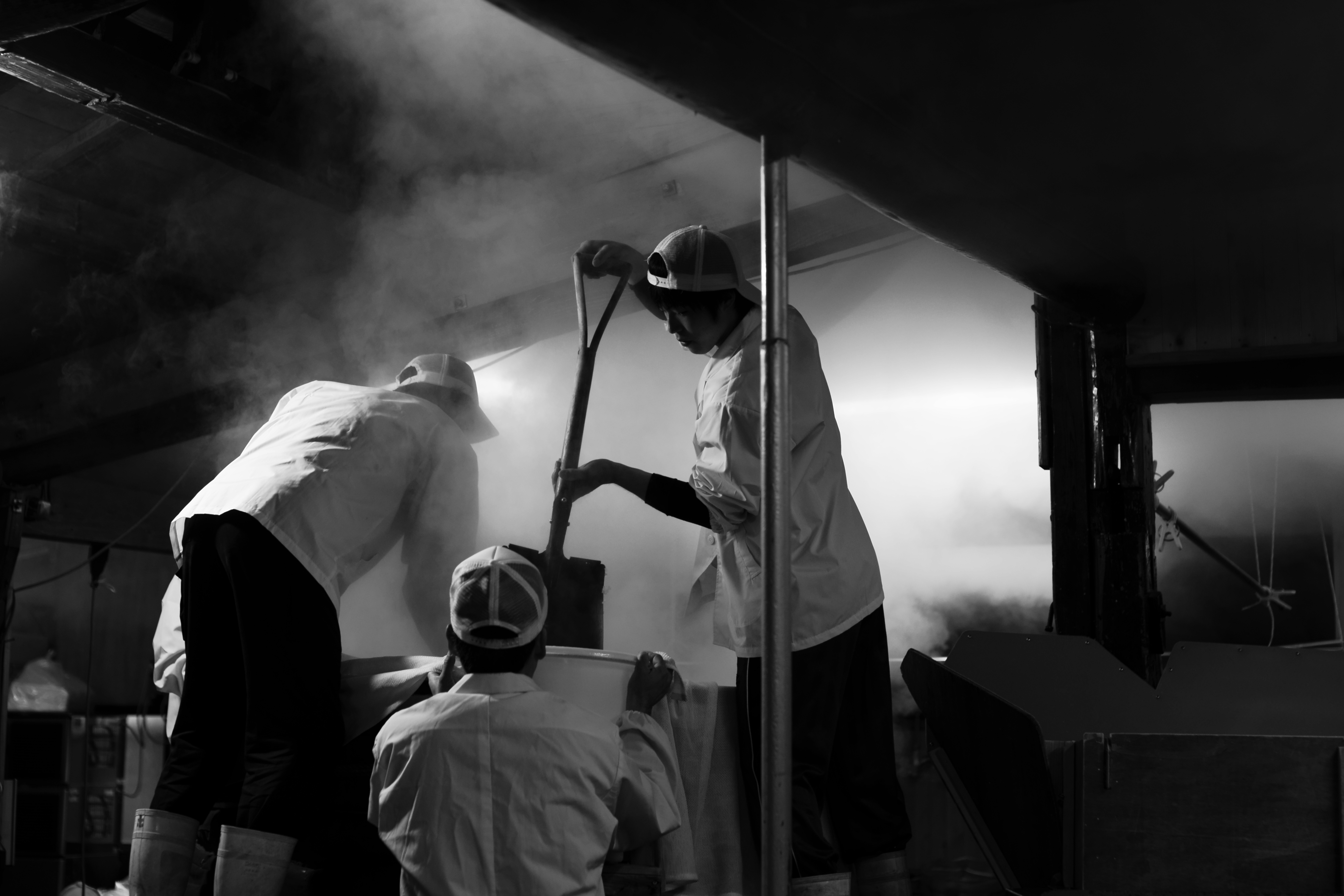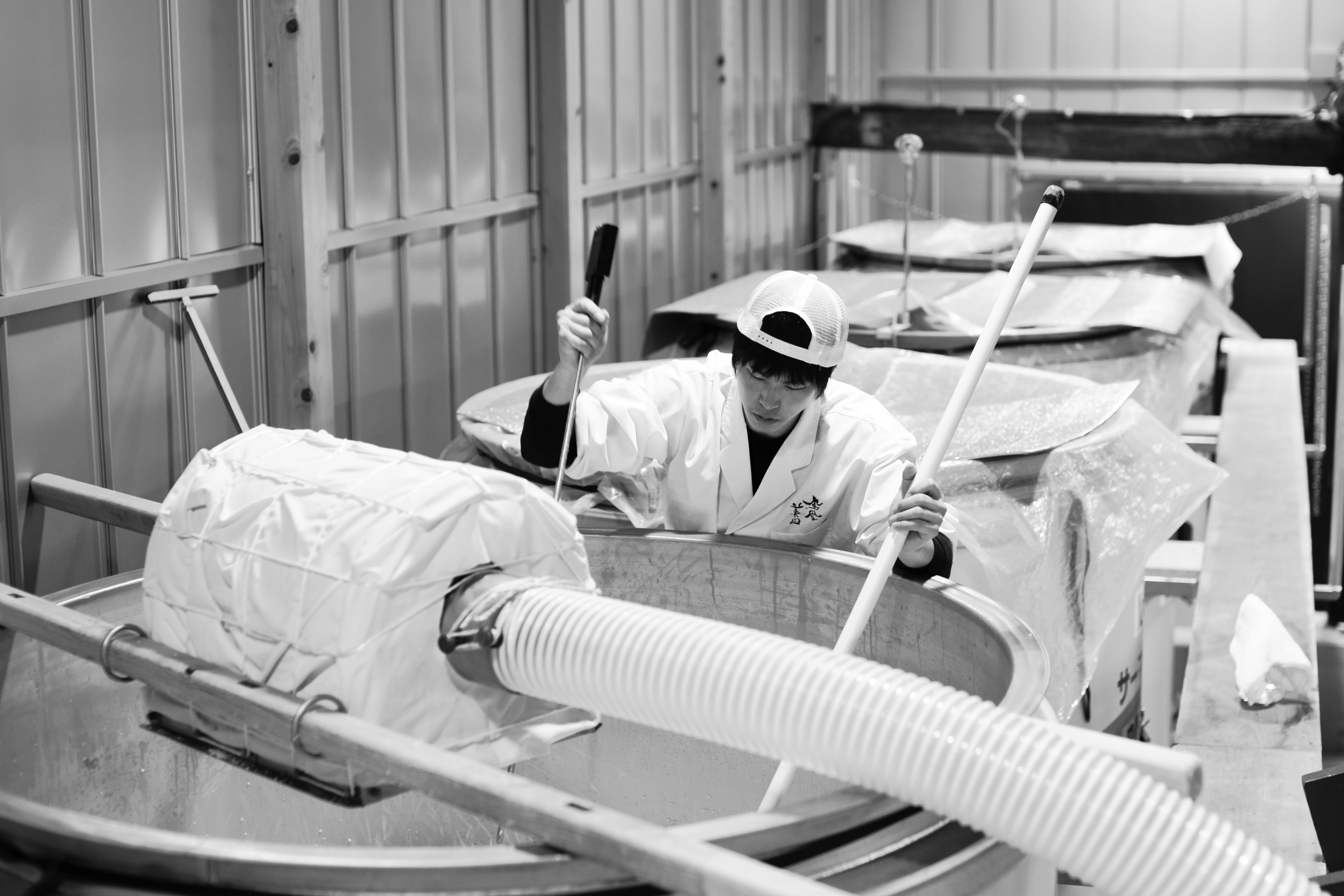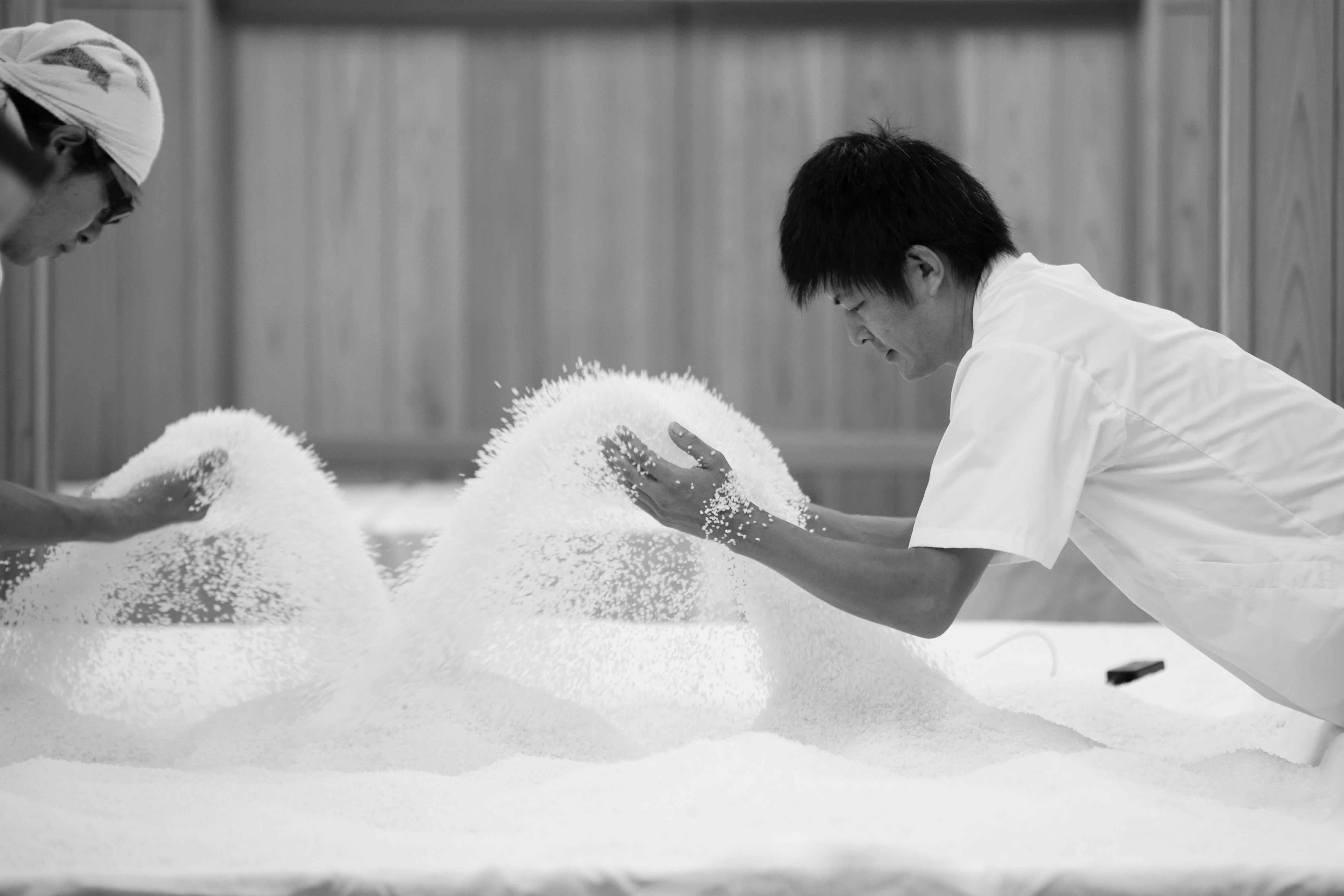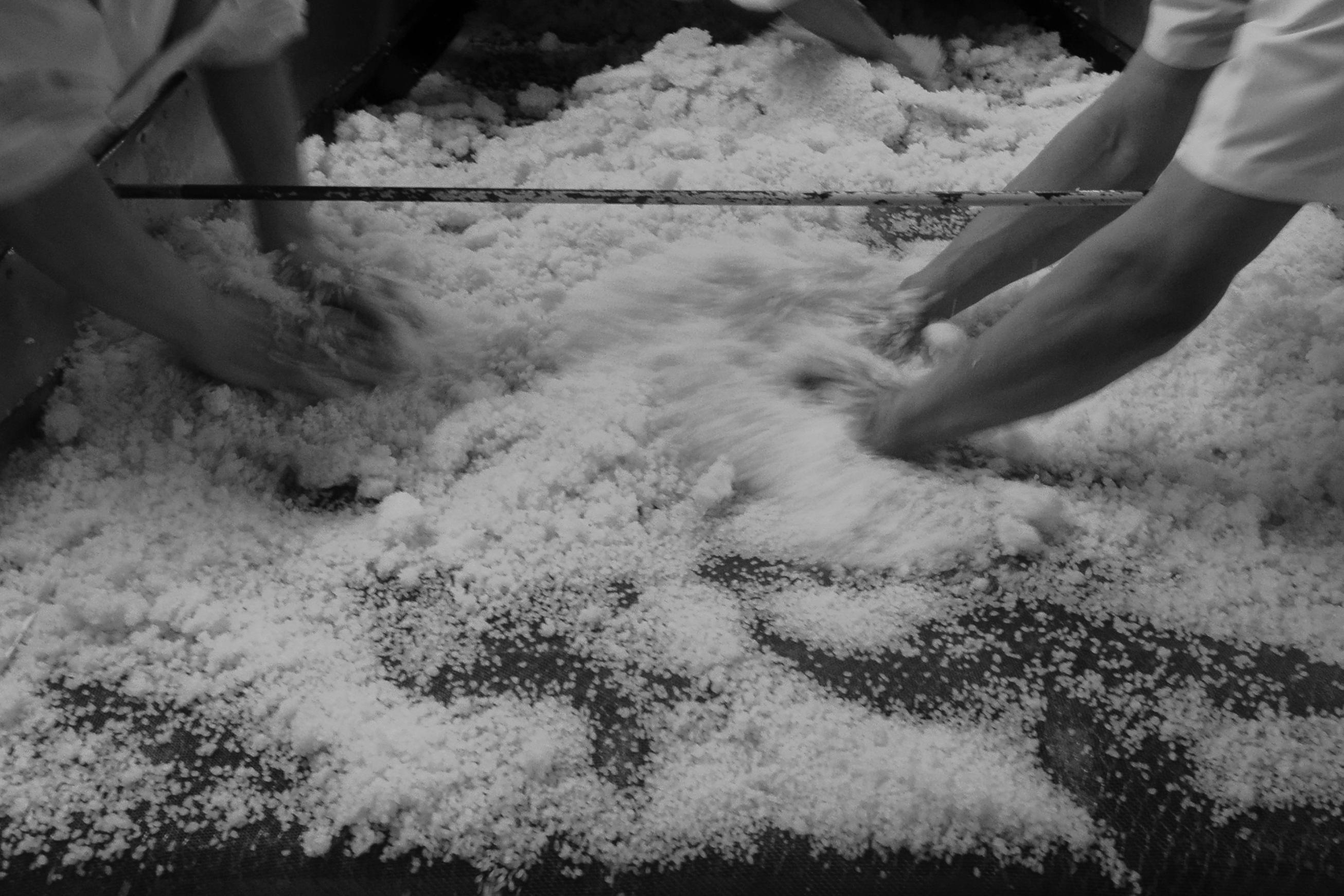Sake Basics
Sake is made using rice, water, yeast, and koji. Each of these ingredients plays an integral role in the complex process of brewing sake. The following is a guide to the general stages of brewing and a review of important Japanese sake classifications.
Rice
After harvesting and drying the rice, the outer husk of the brown rice is removed.
– Polishing
As sake is predominantly made with white rice, brown rice is polished to remove the outer grain. One of the factors of the style, aroma, and flavour of the finished sake is the percentage that the rice is milled along with the type of rice used. The outside of the grain contains most of rice’s fats, oils, minerals, and proteins. Sake made with lightly milled rice (with only 20% of the outer grain polished away) will have more robust an aroma and flavour than sake that is more heavily polished. The Toji, or sake producer, may choose to use a highly polished rice to remove the fats, oils, minerals, and proteins from the rice to make a sake that is more delicate and refined in both aroma and flavour.
– Grading
Sake rice that has been polished to 60% or less of its remaining grain can be legally designated under the Japanese classification of “Ginjo” sake. If the rice has been polished to 50% or less, the sake which results can be designated as “Daiginjo”. Many regard these sakes a ‘premium’ or ‘best’ sake. Sake which does not fall within these categories are more traditional.
– Water
During the many stages of the sake brewing process, a huge quantity of water is used to wash, soak, and steam the rice. Water is also added to the rice to aid in the fermentation process. Water is integral because of the various minerals it consists of; minerals aid in the fermentation process.
Water can be described as “soft” or “hard”, depending on its mineral composition. Soft water is low in minerals and creates a slower ferment. The yeast does not have to work as hard, resulting in a sake that is softer and sweeter on the palate. Water with a higher mineral content, or hard water, creates a quicker ferment that requires a stronger yeast. This results in a sake that is more robust and drier on the palate.
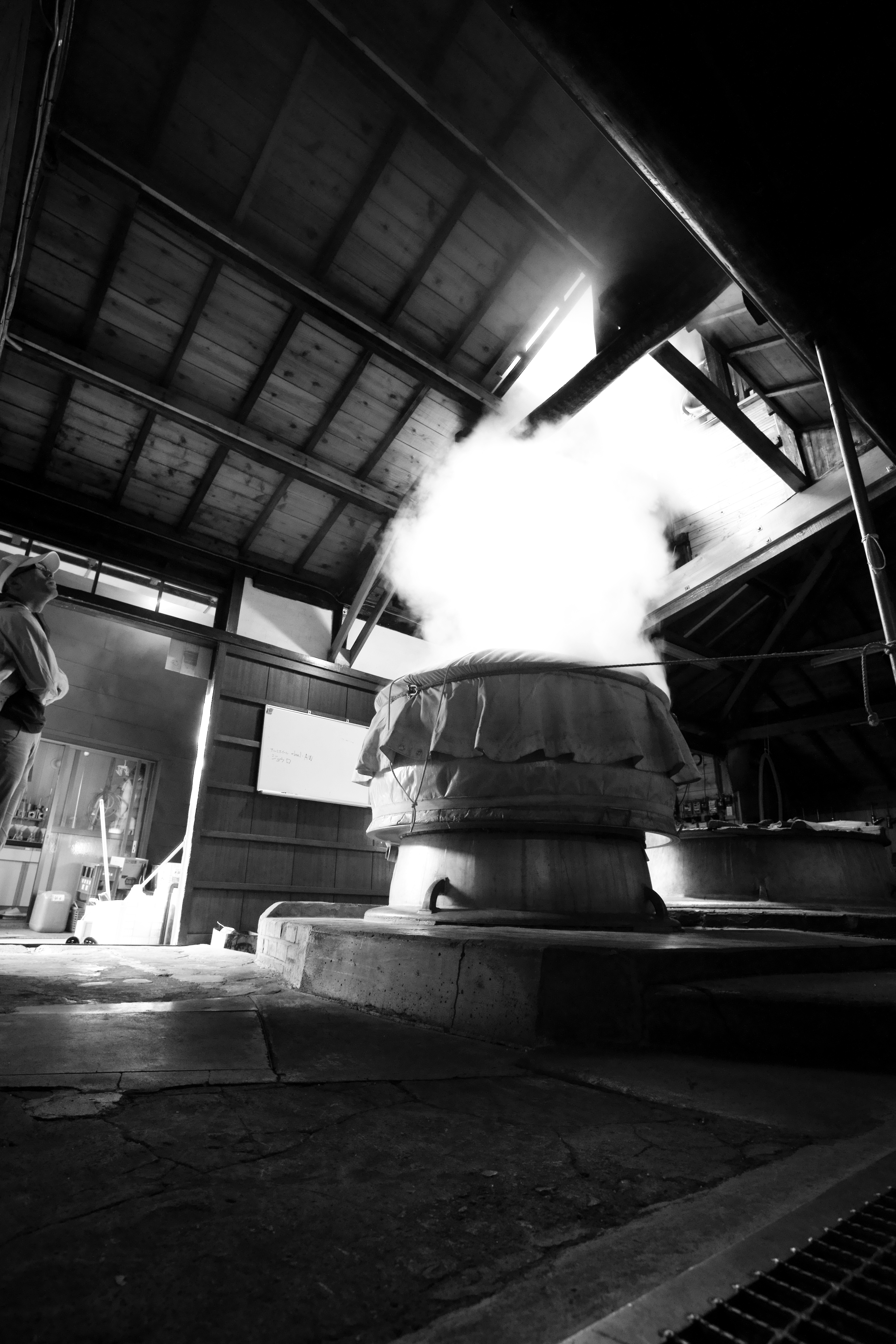
The Brewing Process
The polished rice is washed, soaked, and cooked with steam.
– Koji
The steamed rice is taken to the brewery’s koji room, one that is kept at very hot and humid conditions, just like a sauna. The steamed rice is laid out on a table and sprinkled with koji spores, a mould that breaks the starch in the rice down to produce sugar. These spores are then mixed into the rice and left in the koji room for two to three days to allow for the conversion of starch into sugar.
– Yeast
Yeast allows for fermentation by converting sugar into alcohol. There are various strains used for sake brewing, and new varieties are constantly being discovered, as ancient varieties are being rediscovered. The yeast that the topi selects influences everything from the fragrance of the sake to its flavour and acidity. Most togis use cultivated yeast, but many use will yeast that grows naturally in breweries. The tank where the yeast starter develops is known as the Moto and us designed to let the yeast multiply and ferment before it is added to steamed rice, koji, and water to make the main ferment, or moromi.
– Fermentation
The traditional method of grinding moto together involves the use of wooden paddles. The sake that results is known as Kimoto sake. If the step of mashing moto is skipped, the sake will be known as Yamabai sake. If the topi adds lactic acid to the moto before creating the mash, the sake style is referred to as Sokujo. This is the most common method used in sake brewing as it is easier and faster. Sake made through the Yamabai and Kimoto methods are more robust, earthier, and are more traditional than Sokujo sakes.
When making the moromi, the topi continues to add three more ingredients: rice, koji, and water. These ingredients are added over four days in the main ferment tank until it reaches the desired quantity. The mash is then let to sit to ferment. The Sokujo style takes two weeks while the Kimoto and Yamabai styles take one month each. During this time, the ingredients go through a parallel fermentation process by which the starch in the rice grain is converted into sugar, and existing sugar is converted into alcohol. This results in an undiluted sake with an alcohol content of between 18 and 20%, which is greater than any other naturally fermented beverage.
– Post Fermentation
After fermentation is finished, the liquid is separated from the solids. Many artisan or craft breweries use traditional methods, where the moromi is placed in cloth bags and hung to allow the liquids to drip out (this is known as shizuku or droplet sake). Alternatively, they can be placed in a traditional press where a weight, either that of the bags stacked atop one another or that of a heavy wooden beam press, forces the liquid out gently (arabashiri or free run sake). The most common method of today is the use of a large automated press called an ‘assakuki’. Pressed sake is filtered again. Some breweries use active charcoal to strip the sake of undesirable flavours, colours, or particles.


